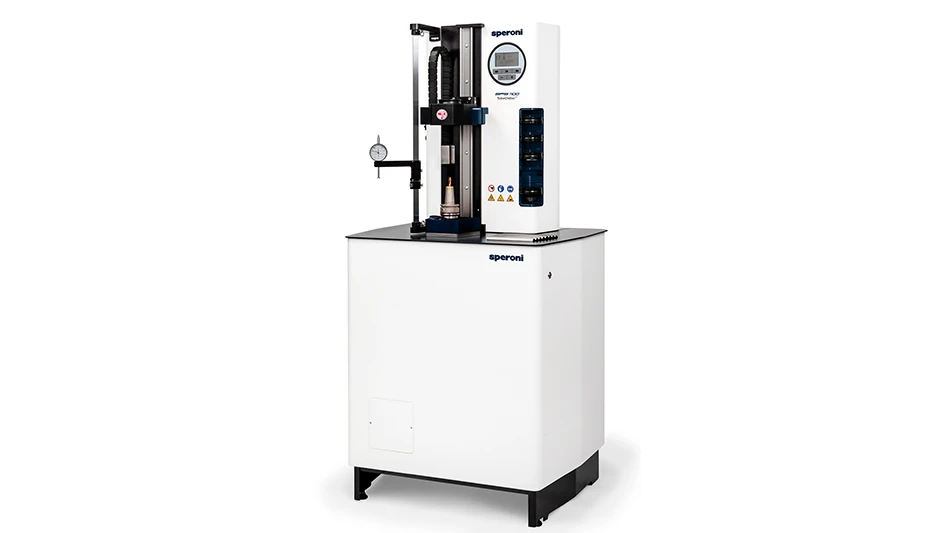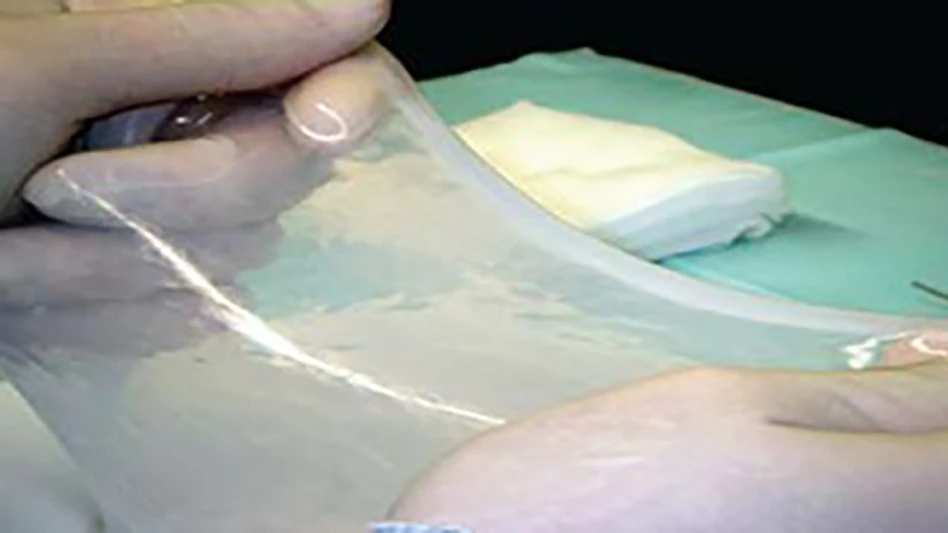The demands of modern medical facilities quickly take their toll on traditional metal and plastic surfaces, but a good way of counteracting this is with the use of thermoset plastics. Thermoset, a special type of polymer, inherently produces harder, more chemically resistant surfaces compared to thermoplastic. Its tolerance to corrosion-causing chemicals enables it to stand up better to the abuse of medical applications. In addition, besides costing less than many alternatives, it can offer more styling flexibility and functionality.
While thermosets are not the right fit for all medical products, they can provide distinct benefits for the right applications – especially in terms of durability; strength-to-weight ratio; chemical, corrosion, and heat resistance; dielectric capabilities; and aesthetics.
For a long time, processing thermosets held a reputation as a dirty operation. This reputation has given many medical OEMs reason to balk, without fully understanding recent refinements to the thermoset process. Molders who specialize in quality have modernized the operation with highly sophisticated tools and approaches, such as Scientific Molding, to offer all the benefits of thermoset to medical customers without the drawbacks.
To help provide a better understanding of the full potential of this technology, offered is an explanation of the benefits of thermosets, the process of molding thermoset parts, and the applications for which they are best suited.
Benefits
The properties of thermosets make them well suited to stand up to the abuses of operating rooms, clinics, dental offices, or labs, which often require chemicals, corrosives, and harsh cleaners for sterilization.
Among the primary qualities of thermosets are strength and durability, properties caused by molecular chains of polymer cross-linking during the curing process and production of a solid. In contrast, traditional thermoplastics are viscous liquids, susceptible to creep and deformation.
However, this cross-linking does have a downside. Once it has taken place, usually at a high temperature, the material can no longer be reshaped. Simply, thermoset products cannot be remelted and recycled.
Otherwise, thermosets’ strength is an asset, providing a high strength-to-weight ratio. In fact, thermosets typically weigh 35% less than steel parts of the same strength.
Their resistance to both corrosion and chemicals makes thermosets better suited to withstand heavy cleaning and decontamination processes than thermoplastics. While many medical-grade cleaning solvents can eventually corrode or discolor metal or plastic surfaces, thermosets stand up just fine. Additionally, some thermoset polymers have anti-microbial properties, which further act to prevent the spread of contagion in medical settings.
Thermosets are also highly resistant to heat. Unlike thermoplastics, they retain their strength when exposed to extremely high temperatures or even flame. This makes them perfect for parts that need to maintain their integrity when heated for sterilization or disinfection.
The dielectric properties of thermosets also make them unique from other plastics, and beneficial for medical products. Unlike conductive metals, thermosets provide electrical insulation, making them ideal for medical equipment requiring an electric current, or any kind of electric componentry, that needs to be isolated.
Thermosets also offer aesthetic advantages with a variety of textures, customizable colors, and glosses. Molding of the color into the part eliminates the need to paint components and ensures that color is consistent throughout. The color of a thermoset part cannot be scratched, worn, or melted off. High gloss finishes are also easily achieved, making surfaces easier to clean as well as visually appealing to patients.
Process
There are several methods for processing thermoset materials; two of the most common are compression molding and injection molding. Whichever method is selected, it is important to collaborate with a molder who is well versed in the intricacies of the process. There is a lot of teamwork that goes into successful design and production. Part designers and molders must work closely with material suppliers to determine the best polymer for a given application.
One of the most common and automated methods of processing thermoset is through injection molding. In this process, material is conveyed through a metering system, typically a screw and barrel. The system heats the material up to a temperature – just shy of its gel point – where the viscosity of the resin is at its lowest level. The material is then injected into a steel mold, which contains the geometry of the part. It is then heated to an appropriate temperature to fully crosslink the resin.
The other most common method, compression molding, is more suited for low-volume jobs. Compared to injection molding, compression molding typically has a longer cycle and is more labor intensive. This process uses a mold similar to those used in injection molding, however, the material is placed directly into the mold instead of being conveyed to the tool. The material quickly heats to a temperature just below its gel point, and the clamp pressure of the press causes it to flow into the geometry of the part.
Suppliers
Typically, three factors dictate the amount of time necessary for curing: its thickness, measured at the thickest cross-section of the part; the temperature of the material loaded into the cavity; and the temperature of the mold. With compression molding, it is also important to consider the size of the material, otherwise known as material charge, as well as its placement inside the tool. These will both dictate the final properties of the molded part.
Occasionally, thermoset suppliers will also process thermoset resins themselves, but this often limits a projects resources and options. This type of arrangement can lead to single sourcing parts in proprietary materials, hindering both sourcing flexibility and the ability to maximize material performance.
For example, a supplier might only be able to produce a single type of thermoset or its in-house blend might not have the required certification. In addition, since proprietary materials are not available in the open market, transferring the work to a different molder becomes nearly impossible.
One way some of the most expert molders assure the highest quality parts are to apply the techniques of the Scientific Molding process to thermoset applications. Currently employed by approximately 5% of molders in the United States, Scientific Molding is a disciplined, systematic approach to part processing that focuses on material and measurements. Using this method enables more predictable, controlled processing to reduce defects and maximize repeatable part quality.
To support this approach, molders can use a variety of advanced monitoring techniques. Dielectric cure sensing, for example, uses impedance sensors and computer software to measure and analyze the conductivity of resins during the melting and molding process. Processing engineers apply that data to optimize the process and to compensate for batch-to-batch variations in raw material.
Applications
In medical offices, thermosets are often used to protect important equipment. For example, thermosets have replaced metals as the materials of choice for equipment housings in many dentists’ offices. Besides costing less than metal alternatives, thermosets offer more design flexibility and functionality as equipment housings.
Another major application for thermoset plastics is handheld medical devices. The durability and noncorrosive qualities leave parts unaffected by the wear of constant handling and use. The ability to texturize and customize the feel of the material creates ergonomic devices that can be easily handled. Handheld medical devices made with thermosets include a variety of dental, surgical, and orthopedic instruments.
Large surfaces such as counters or chair components are also ideal for the thermoset process.
Clearly, thermosets can offer distinct advantages many other materials cannot. They are not the right solution for every medical application, but they are quickly establishing their place in the industry for specific applications. Because the process is continually becoming more refined, and because thermoset parts often cost less and offer more design flexibility than their alternatives, their popularity will only continue to grow into the future.
Dickten Masch Plastics (DMP)
Nashotah, WI
dicktenplastics.com

Explore the April 2011 Issue
Check out more from this issue and find your next story to read.
Latest from Today's Medical Developments
- IMTS 2026 runs Sept. 14-19 at McCormick Place in Chicago, Illinois
- Master Bond’s MasterSil 800Med
- ZEISS celebrates 100 years of advancing innovation in the US
- Teleflex sells acute care and urology businesses for $2.03 billion
- HANNOVER MESSE: Where research and manufacturing meet
- What’s next for the design and manufacturing industry in 2026?
- Arcline to sell Medical Manufacturing Technologies to Perimeter Solutions
- Decline in German machine tool orders bottoming out





